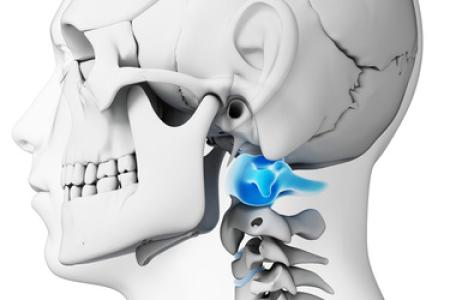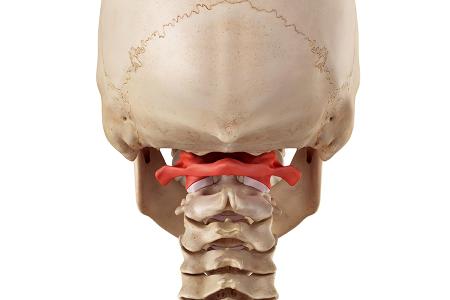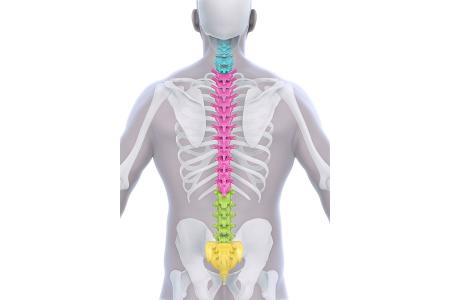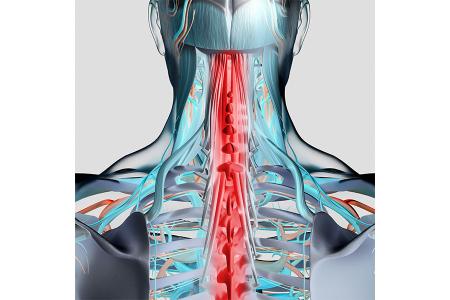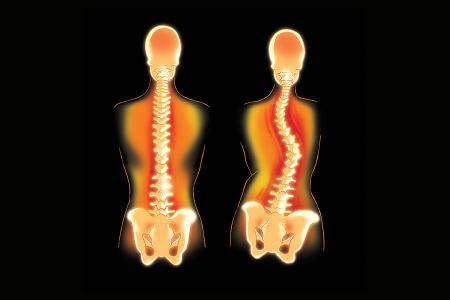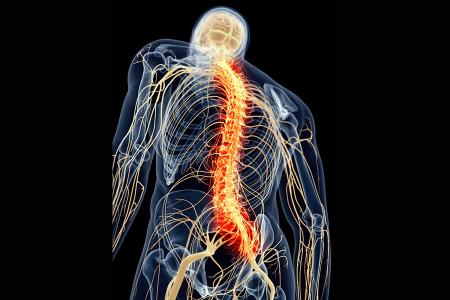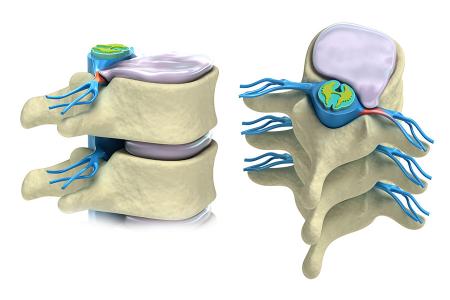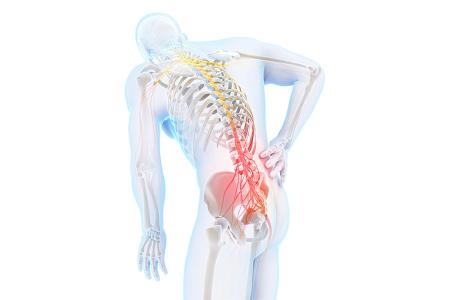What is atlasology?
What exactly is atlasology and what is an atlasologist? To find out, let's take a look at the anatomy of the body.
Let's start with the brain...
All of our bodily functions are controlled and monitored via the nervous system, while every sensation and movement of the body is processed by the brain. Our nerves are responsible for sending all of these impulses to and from the brain – and not only do they transmit conscious movements, but also organ activity such as our heartbeat, our kidney function and our breathing. Everything is controlled via the nerves by the brain. It sends millions of nerve impulses through the body every second. And almost all of our nerves run through the atlas via the spinal cord.
...then go via the spine…
The brain and spinal cord are protected by the skull and the spine. The spine must be intact for the nervous system to function properly, meaning that even the slightest misalignment of vertebrae, and in particular the topmost cervical vertebra of the spine – the atlas – can adversely affect the functioning of our nerves. The goal of atlasology, therefore, is to gently bring the spine back into optimum alignment and balance.
The spine has three main functions: it supports the body in its upright position; it protects the highly sensitive spinal cord; and it is responsible for our general mobility. It consists of 24 vertebrae divided into seven cervical vertebrae, twelve thoracic vertebrae, and five lumbar vertebrae. The sacrum, which is made up of five fused vertebrae, forms the pelvis together with the ilium, the ischium and the pubis. Finally, at the base of the spine is the tailbone or coccyx.
For our spine to be flexible, nature built in intervertebral discs between each of our vertebrae, except between the skull and atlas (the first cervical vertebra or C1) and the axis (the second cervical vertebra or C2). Spinal nerves, of which we all (usually) have 31 pairs, emerge from the spinal canal. So if vertebrae become displaced, for example after a fall, the load on the intervertebral discs can cause the vertebrae to come out of alignment. This can result in the nerves between the vertebrae becoming pinched, which in turn can cause a wide variety of complaints such as muscle tension and back pain. As each individual spinal nerve transmits information to an organ or part of an organ, a vertebral displacement can therefore also cause organ dysfunction.
![]() List of possible complaints/symptoms caused by a spinal misalignment
List of possible complaints/symptoms caused by a spinal misalignment
...to the atlas...
The two uppermost vertebrae of the spine, the atlas (the first cervical vertebra or C1) and the axis (the second cervical vertebra or C2), differ significantly from the other vertebrae in the spine. Instead of there being an intervertebral disc between them, there is an articular surface between the skull and the atlas, and the atlas and the axis, which is what allows our head to move. However, because there are no discs here, the atlas is very sensitive and therefore susceptible to displacement.
The area around the atlas has a dense supply of nerves. These nerves detect the position of the body and control the tension of the muscles, ligaments, and tendons of the whole body. Direct nerve connections to your organ of balance and to specific centres in the brain control your gross and fine motor skills – in other words, your movement skill in general. If your mobility is restricted, your body – or more accurately your nerve cells – send out a signal, which your brain interprets as pain.
...and finish with atlasogists
What does an atlasogist do?
An atlasologist brings a misaligned spine back into optimum balance. He or she learns to do this through thorough and extensive training.
How does an atlasologist know that the spine is out of balance?
The first way to recognise this is an oblique or rotated pelvis, which the atlasologist determines by carrying out a leg test. If one leg looks like it is shorter than the other, this indicates that the spine is out of alignment – in this case, the fifth lumbar vertebra is incorrectly positioned. The displaced atlas is then centred by the atlasogist using a technique called ‘adjustment’. He or she does this by touching the lateral processes of the atlas with their two middle fingers. This causes the atlas to vibrate energetically and move itself back into its natural position.
Atlasology is a gentle, energetic technique in which your atlas is made to vibrate without any tools or instruments. However, as we are always in motion, an atlas will never stay centred indefinitely.



